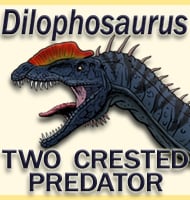Mahakala
In Depth Named in 2007, Mahakala has been widely accepted as one of the most primitive formed dromaeosaurids so far discovered. Key to this idea is the observation that the third metatarsal is not compressed, whereas in more advanced dromaeosaurids and troodonts it is. However another fact to consider is that Mahakala lived during the … Read more
